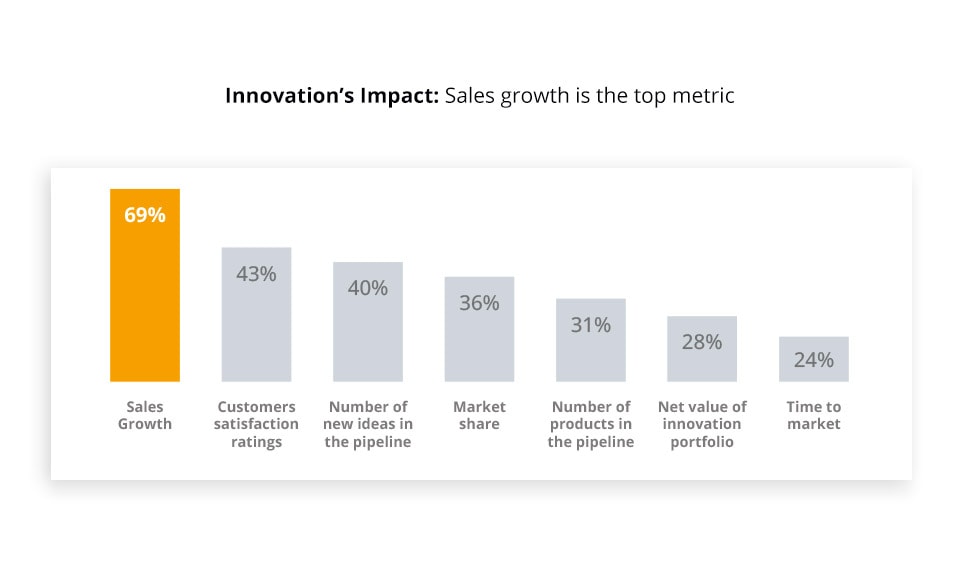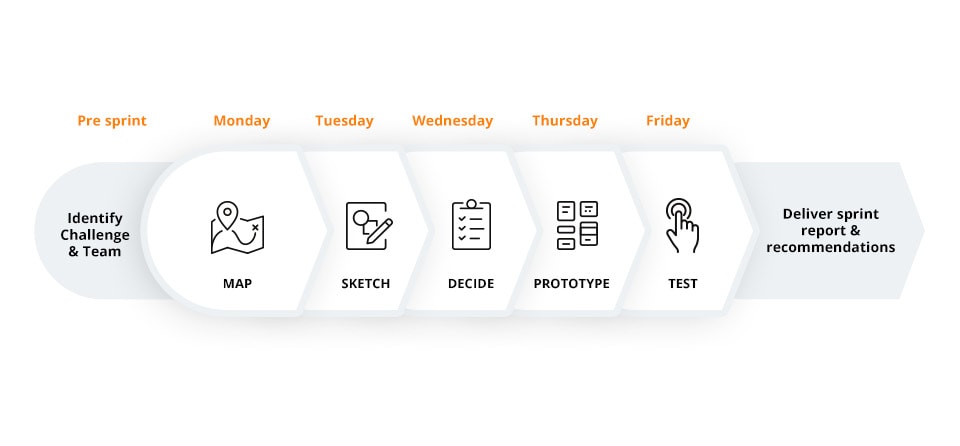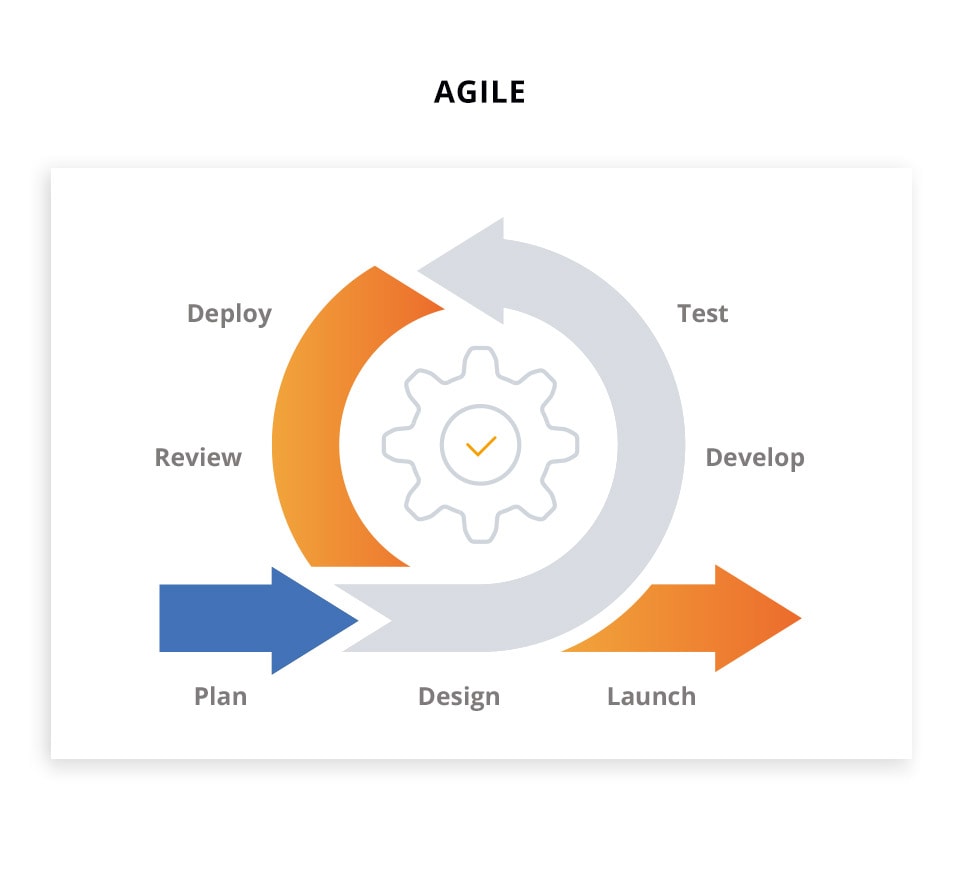
Driving innovation and growth with data: how to foster a culture of experimentation
In business landscape, data and the way it is managed stands as the catalyst for innovation and growth, propelling organizations toward unprecedented levels of success.
A mindset of experimentation and exploration woven into an organization’s culture truly unlocks the transformative power of data.
In the pursuit of driving innovation and fostering growth, embracing a culture of experimentation emerges as a pivotal strategy, where data becomes the fuel that powers insightful discoveries and groundbreaking advancements.
Why are data and creativity key to digital transformation?
This article delves into the pivotal role that fostering a culture of experimentation plays in leveraging data as a cornerstone for innovation.
From redefining traditional approaches to problem-solving to encouraging risk-taking in decision-making, this exploration illuminates the pathways through which organizations can harness the potential of data-driven experimentation.
Read more:
- Creating a data-driven culture: a roadmap for organizational transformation
- Data-driven insurance: exploring the latest trends
The interplay of data analytics, innovation, and experimentation
Data analytics is a concept that has been applied to all areas of business. From streamlining supply chain operations to fine-tuning market segmentations, data analytics is a common feature of all successful companies.
However, there is still a need to establish a competitive edge. Therefore, innovation and experimentation within data analytics and based on data analysis are essential.
An example of innovation and experimentation within this space includes the use of AI and machine learning solutions.
Companies have developed advanced analytics techniques using Deep Learning algorithms and Natural Language Processing (NLP) techniques to analyze structured and unstructured data alike. The techniques enable a more sophisticated analysis of large datasets, allowing for better predictions, pattern recognition, and sentiment analysis.
Another way development team could experiment within the data analytics space is through predictive maintenance and risk mitigation.
In many industries like manufacturing and finance, organizations have employed predictive analytics to anticipate equipment failures and market fluctuations. Preemptively addressing issues and making decisions reduces downtime, saves costs, and optimizes performance.
Understanding the basics of a data-driven culture
A data-driven culture revolves around using data as the core asset in decision-making and fostering an environment where data is ethically managed and protected.
First, an organization looking to develop new business models or products must view data as a strategic and vital asset. The better a company treats data collection, storage, analysis, and interpretation, the better insights will be drawn and decisions made.
Next, encouraging a mindset where decisions are grounded in data and evidence rather than intuition or past practices is a must. This mindset can be fostered by improving data literacy and skills across the business units.
Ensuring employees understand how to interpret and use data effectively starts with providing the proper training and resources to enhance skills and empower individuals to leverage data for decision-making.
Finally, ethical data use is a key component. Organizations must work to limit biases within Deep Learning and neural networks while adhering to statutory data laws surrounding privacy, security, and code of ethics.
Prioritizing fair ethics within data analysis builds trust and integrity within the company and encourages buy-in from those slow to adopt a data-driven culture.
Experimentation: the heartbeat of innovative companies
Experimentation keeps new ideas alive and builds an atmosphere abundant with innovation. In order to maintain a competitive advantage and stay ahead of the curve, companies must experiment and innovate.
Experimentation is also beneficial because it encourages a continuous cycle of learning and refinement. By testing ideas, companies gain insights into what works and what doesn’t, further allowing them to innovate and build new revenue streams. In order to experiment, a business must be willing to take risks.
Experimentation allows a safe space for calculated risk-taking, allowing companies to explore new ideas and approaches without fear of failure.
Relying on data-driven insights is a must to mitigate the risk of experimentation. Through data analysis strategies involving neural networks and machine learning, companies can make decisions based on empirical evidence and holistic view rather than assumptions and intuition.
Read more:
- Transforming business with Generative AI and AWS: a case study
- AWS AI services and ML solutions: let’s explore them!
Finally, experimentation fosters a culture of curiosity and continuous learning. Employees are more likely to question assumptions and seek improvement by learning from both successes and failures.
Overall, experimentation helps companies innovate and develop a strong organizational culture.
The psychological shift: encouraging risk-taking and embracing failures
Encouraging risk-taking and embracing failures necessitates a psychological shift within organizations, fostering a culture that views setbacks as opportunities for growth and innovation.
Creating an environment where employees feel safe to take risks and question assumptions without fear of punitive measures fosters creativity and innovation. In fact, employees are more likely to take calculated risks.
Furthermore, it is vital to create an organizational culture that views failures as learning opportunities. Highlighting the lessons learned and celebrating the relevant insights gained from these calculated risks encourages employees to evaluate innovative ideas.
Rapid prototyping: accelerating innovation through iterative data testing
Rapid prototyping is an approach that accelerates innovation by swiftly iterating through data-driven testing of ideas or prototypes. The methodology expedites the development and refinement of products, services, or strategies through quick cycles of design, testing, and iteration.
Since rapid prototyping allows for the swift creation of prototypes or minimum viable products (MVPs) based on data-driven insights, companies are enabled to bring new concepts of improvements to market faster, gaining them a competitive edge.
Through rapid cycles of testing and feedback, businesses also continuously refine their prototypes. Each version they develop will better align with user needs and market demand.
Additionally, developing and testing prototypes early in the development process mitigates the risks associated with larger-scale investments. Failure is less probable further along the development process.
Creating a strong product culture within an organisation isn’t easy, but – by leveraging rapid prototyping – companies streamline innovation and swiftly respond to market needs.
Educating the workforce: training programs to cultivate a curious, data-savvy mindset
Creating training programs that cultivate a curious and data-savvy mindset within the workforce is crucial for fostering a culture of innovation and data-driven decision-making.
Start with foundational training on data literacy by covering basic concepts, terminology, and the importance of data. Additionally, focus on educating employees on how data is collected, analyzed, and utilized within the organization.
Next, provide more hands-on training in data analysis tools and techniques. There are many platforms, statistical software, and data visualization tools that can be learned through practical exercises that allow employees to apply theoretical knowledge to real-world scenarios.
Finally, make sure to educate employees on the ethical use of data. Within the data analysis landscape, there are many ethical considerations to be mindful of, including data usage, privacy regulations, and the importance of safeguarding sensitive and even proprietary information.
Teaching employees the ethical ramifications is equally as important as teaching them theoretical and practical knowledge.
Machine Learning & AI: boosting the rate of successful experiments
Machine learning (ML) and artificial intelligence (AI) significantly enhance the rate of successful experiments by revolutionizing how experiments are designed, executed, and optimized.
ML and AI algorithms analyze vast datasets to predict potential outcomes or patterns through predictive analytics. By leveraging historical data, these technologies assist in forecasting the success probability of experiments, which guides companies toward more promising results.
ML can also be used in automated hypothesis testing. Algorithms can analyze complex relationships in data, which accelerates the identification of correlations or casual relationships.
AI also contributes to personalized experimentation by tailoring variables or conditions based on individual preferences or characteristics. Experiments become more relevant, and the probability of success is boosted.
AI algorithms are used to detect anomalies and correct errors during experiments. Issues are identified quickly and efficiently, which minimizes the impacts of failures and maximizes successful outcomes.
Read more about the ways and applications of AI solutions:
- The improvement of price prediction with AI
- Reducing churn with Artificial Intelligence
- Predicting stock prices and market shifts using AI
Finally, AI and ML allow for the scaling of experimentation efforts. Automated processes and algorithms facilitate handling larger datasets, enabling more experiments to be conducted simultaneously, further increasing the likelihood of success.
Challenges to overcome: potential pitfalls in cultivating an experimental culture
While the benefits of cultivating an experimental culture are abundant, it is vital to err on the side of caution and understand the potential pitfalls.
One of the primary challenges involves overcoming a culture that originally avoids risks and fears failure. Data scientists may be hesitant to experiment if they perceive failure as punitive rather than a learning opportunity.
Another pitfall is the lack of resources an organization may have. Whether it be limited time, budget, or skilled personnel, organizations must address this by allocating adequate resources to support the necessary teams.
Another problem is balancing short-term vs. long-term goals. Striking the right balance can be challenging. Since experimentation might not yield immediate results, short-term-focused environments are often difficult to justify.
Finally, data silos and accessibility problems are common when attempting to cultivate an experimental culture. Data accessibility and fragmentation across departments or systems can impede experimentation.
Additionally, difficulty in accessing and integrating data from various sources limits the ability to conduct comprehensive experiments.
The future is agile: incorporating data-driven decision-making in agile frameworks
Integrating data-driven decision-making into agile frameworks represents a powerful synergy, enabling organizations to make informed and responsive choices.
First off, an agile framework refers to a structured, flexible approach used in project management and software development. It emphasizes interactive work cycles, collaboration, adaptability, and customer-centricity to deliver high-quality products efficiently.
The first step to incorporating data-driven practices into agile frameworks is embedding test results and insights into user stories. By using data analytics to identify user needs, behaviors, and preferences, user stories are enriched by empirical evidence and ensure that product development aligns with user expectations.
Additionally, organizations must establish mechanisms for continuous feedback loops that leverage data. Integrating user feedback, metrics, and analytics into decision-making enables interactive improvements based on real-time insights.
Finally, insights drawn from data allow businesses to create adaptive roadmaps for product development. These roadmaps can be regularly reassessed and adjusted based on evolving data trends and market changes. These roadmaps will allow organizations to pivot when needed and provide a guide to decision-making based on data-driven insights.
Upgrade your data strategies with Future Processing!
In business, data emerges as a valuable asset, steering organizations toward unparalleled innovation and growth. Fostering a culture of experimentation highlights the transformative potential that lies within data-driven strategies.
From redefining traditional problem-solving approaches to embracing risk-taking and continual learning, the journey toward leveraging data as a catalyst for innovation is rich with insights.
So, if you are looking for an experienced and proven IT business partner, then get in touch!







